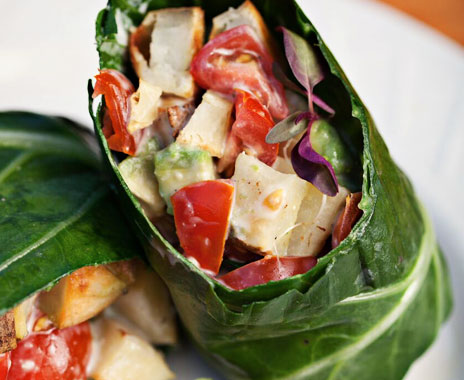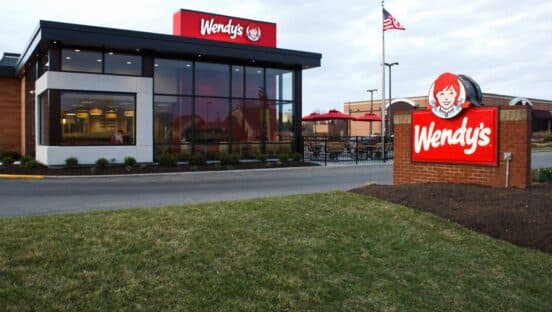Vegetarian, vegan, and plant-based food isn’t so weird in fast casual anymore. After all, market research firm Mintel recently found that 75 percent of 25–34-year-olds and 61 percent of all consumers say they enjoy menu items that heavily feature vegetables.
But a produce-only fast casual? That’s a whole new ballgame. And that’s exactly what CORE Kitchen is accomplishing at its first location in Oakland, California, which opened in December and claims to be the world’s first produce-only restaurant.
“We wanted to create a restaurant where people can come in, they can eat anything that they want, and they can only get healthier,” says Corey Rennell, founder and CEO. “We want that to apply to all diet types, whether it's vegan, vegetarian, gluten-free, Paleo, Weight Watchers, low glycemic, low salt, whatever. We want to hit all of those diet types.”
In 2010, Rennell founded parent company CORE Foods, where his goal was to develop more nourishing, organic foods. The company’s primary product is the CORE Meal, which is an oatmeal bar made up of 100 percent fruits, seeds, nuts, and grains—no syrup, salt, flour, or oil. The bars are distributed nationally at retailers like Whole Foods, Costco, and Safeway.
But while CORE customers were turning to the CORE Meal for breakfast, Rennell says, they were also interested in having a healthier lunch option. So his team applied the same fresh-food mentality to a fast-casual prototype.
“Literally the only ingredients we're allowed to bring in the back of the restaurant are fresh and dried fruits and vegetables—no third-party processed goods, no oil, no salt,” he says. “And a lot of restaurateurs think that is totally insane. But what it’s forced us to do is really get more talented and creative at our recipe creation.”
The CORE Kitchen menu is divided into three primary categories: Collard Wraps, Hearty Plates, and Crisp Salads. There are also desserts, sides, and drinks.
Collard Wraps, which include ingredients wrapped in a collard leaf like a burrito, come in three varieties: The Hearty, with herbed potatoes, chickpeas, avocado, and garden “fixins” and topped with a tahini cashew cream; The Curry, with roasted cauliflower, shredded carrots, potatoes, and peas and topped with a rich coconut korma sauce; and The Yucatan, which has roasted sweet potatoes and sautéed vegetables and is topped with a smoky cumin tahini sauce.
Hearty Plates include the Caribbean Bowl, with black beans, tropical fruit, onion, cilantro, and coconut lime sauce, as well as the Thai Linguine, with blanched zucchini noodles, veggies, toasted cashews, and a nutty coconut sauce. There are also veggie sliders served on a lettuce leaf and a loaded baked potato skin.
Among the sides are Cumin Sweet Potatoes and a Carrot and Beet Slaw, and the desserts are a Walnut Blondie and Chia Pudding. Drinks include house-made sparklers, juices, smoothies, and teas.
Rennell describes the CORE Kitchen menu as “Subway 2.0.” Whereas the sandwich giant has thrived on the mantra “Eat Fresh,” he says, CORE Kitchen strives to serve “the freshest eats you can eat.”
“It's forced us to really get back to the roots of flavor engineering and cooking from foods that are just naturally grown,” Rennell says, adding that the approach is less chef-driven and more based upon what diet-minded team members have developed in their own kitchens. “We don't want to change the game too much in what people's expectations of the finished dishes are.”
Because CORE Kitchen is located in downtown Oakland, it holds only limited hours: 10 a.m. to 3 p.m., Monday through Friday. Located near a BART train stop, the restaurant hosts many lunchtime customers from across the bay in San Francisco.
Despite those limited hours, Rennell sees an opportunity in focusing on the lunch model. Diners are more discerning about their nutrition at lunch, he says, and are in need of a quick, convenient option at the same time.
“What we see is that for dinner, people want to drink. They want to indulge in the fatty food. They want to really enjoy themselves,” he says. “But for lunch, people oftentimes only have about 45 minutes. It's not about indulgence. It's just about getting [food] and getting back to work in an affordable way.”
Rennell says CORE is perfecting the model before opening additional Kitchens in the Bay Area. Future restaurants will similarly be in high-traffic lunch areas, he says, and the goal is to use the Oakland restaurant as a commissary so that new locations can leverage small footprints. After saturating the Bay Area, the plan is to move on to 14 U.S. markets where the CORE Meal has excelled in retail locations.
But for a concept in which the entire model lives and dies on food with a short shelf life, one hurdle remains: creating a local-sourcing infrastructure that keeps pantries stocked and customers satisfied.
“What happens when tomatoes don't grow in Chicago like they grow in San Francisco? And how are we going to bridge that gap?” Rennell says. “I don't think we have the answers to that question quite yet, but I think what we're going to have to do is define for our customers a different type of comfort point with consistency in different parts of the country.”





